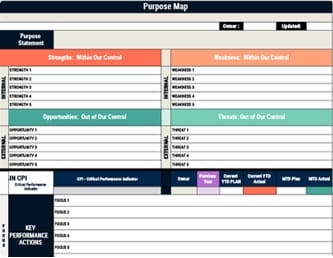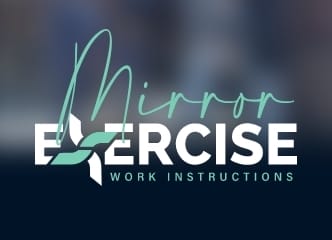Just as a well-tuned orchestra requires harmony among its musicians, your organization needs alignment across its various components to perform optimally. Understanding organizational alignment models and frameworks can help you achieve this harmony by aligning goals, structures, and cultures. By exploring different types of alignment and frameworks like OKRs and the McKinsey 7-S Model, you can uncover strategies to enhance efficiency and communication. Curious about how these principles can drive growth and innovation in today’s dynamic business world?
Key Takeaways
- Organizational alignment enhances efficiency, minimizes miscommunication, and promotes effective communication within a company.
- Vertical and horizontal alignments ensure clear information flow and foster interdepartmental collaboration, respectively.
- OKRs and the McKinsey 7-S Model are frameworks for measuring and supporting organizational alignment.
- Regular performance assessments using KPIs help maintain alignment with strategic objectives.
- Aligning organizational structure with customer needs boosts satisfaction and improves service delivery.
Understanding the Importance of Organizational Alignment
Although it might seem like just another management buzzword, organizational alignment is actually a crucial aspect of running a successful business. When your company aligns its operations with strategic goals, you boost efficiency and minimize miscommunication.
This alignment fosters improved employee engagement and morale, as everyone understands their role and how it contributes to the bigger picture. Effective communication is key here; it ensures that everyone is on the same page, which in turn enhances profitability and strengthens customer relations.
As your organization continuously aligns with its goals, it becomes more adaptable to change, facilitating continuous improvement. This adaptability is essential in today’s fast-paced business environment, where sustained growth and innovation hinge on your ability to pivot and thrive amidst challenges.
Types of Organizational Alignment
Organizational alignment is crucial for ensuring that every part of your company works toward common objectives, and understanding the different types can greatly enhance this process.
Vertical and horizontal alignment play pivotal roles; vertical alignment ensures a clear flow of information from leadership to employees, aligning them with organizational goals, while horizontal alignment fosters collaboration across departments to meet team goals effectively.
Vertical and horizontal alignment ensure clarity and collaboration in achieving organizational and team goals.
Strategic alignment unites all departments under a shared strategic vision, ensuring alignment within the organization’s long-term objectives.
North Star alignment focuses efforts around a single key metric, guiding teams toward crucial outcomes.
Customer alignment emphasizes tailoring efforts to meet customer needs, enhancing satisfaction and loyalty.
Each type contributes to effective organizational alignment by ensuring every effort is directed toward collective success.
Frameworks for Measuring and Supporting Alignment
To effectively measure and support alignment within an organization, adopting structured frameworks can be immensely beneficial.
Organizational alignment frameworks like OKRs and the McKinsey 7-S model guide you in aligning team and individual objectives with strategic goals. OKRs focus on ambitious goal-setting and regular performance reviews, ensuring cohesion across all levels.
The McKinsey 7-S model evaluates strategy, structure, and shared values to pinpoint misalignment, enhancing execution. Tools such as the Organizational Alignment Survey enable you to assess alignment effectiveness and identify improvement areas.
Incorporating continuous communication and feedback loops keeps everyone informed and motivated. By employing these alignment methods, you promote a cohesive work environment where communication supports strategic objectives, making alignment efforts measurable and effective.
Steps to Implement Alignment in Your Organization
Implementing alignment in your organization starts with defining clear, strategic objectives that embody your long-term vision.
These objectives should align with your core values and competencies, guiding all teams toward common goals. Break them down into measurable key results, ensuring each department aligns their specific goals with the broader organizational aims to achieve cohesive progress.
Clear roles and responsibilities linked to these strategic objectives promote accountability and reduce ambiguity. Facilitate continuous communication and feedback through regular check-ins to keep everyone informed and make necessary adjustments.
Regular performance assessments using tools like KPIs and surveys provide insights into alignment effectiveness. This allows you to make informed adjustments, ensuring your organization remains aligned with evolving business needs.
Case Studies and Best Practices for Effective Alignment
While aligning your organization may seem daunting, real-world examples provide valuable insights into how others have successfully navigated this challenge.
Consider these case studies and best practices:
– Explore case studies to uncover alignment strategies that drive productivity and enhance customer satisfaction.
- A tech startup utilized the OKR Method, driving a 30% increase in team productivity and reducing project delays by aligning strategic goals and enhancing inter-departmental communication.
- A retail chain improved customer alignment by integrating a unified CRM system, boosting customer satisfaction by 25% and repeat purchases by 15%, showcasing the importance of aligning organizational structure with customer needs.
- A healthcare organization adopted the McKinsey 7-S model, achieving operational efficiency with a 20% reduction in patient wait times, highlighting the significance of employee engagement and strategic alignment of systems and staff for improved service delivery.
Frequently Asked Questions
What Are the 4 Types of Organizational Models?
When exploring organizational models, you’ll encounter four key types: vertical alignment, where information and goals flow from top management to employees; horizontal alignment, focusing on collaboration across departments; strategic alignment, ensuring all elements work towards a common vision; and customer alignment, prioritizing customer satisfaction throughout the process.
Each model serves a unique purpose, guiding organizations to effectively meet their objectives while maintaining focus and coherence in operations.
What Is the Organizational Alignment Model?
When you want all parts of your organization to sing from the same hymn sheet, the Organizational Alignment Model is your go-to strategy.
It ensures your strategy, structure, and culture work in harmony towards shared goals. Aligning strategy, systems, and skills, it closes the gap between big-picture goals and daily tasks.
This model boosts employee engagement and decision-making, leading to better collaboration, profitability, and customer satisfaction.
Regular adjustments keep everything adaptable and innovative.
What Is the 7s Model of Organizational Alignment Models?
The 7-S Model is a framework to ensure your organization’s key elements are aligned for success.
It includes Strategy, Structure, Systems, Shared Values, Style, Staff, and Skills. You need to understand how these elements interact; a change in one affects the others.
Regular assessment and refinement keep them in sync with strategic goals, ensuring your organization adapts to changes and maintains coherence and effective performance.
What Is the MIT Strategic Alignment Model?
Imagine aligning your business and IT strategies like synchronizing gears in a clock, ensuring they work seamlessly to drive success.
The MIT Strategic Alignment Model emphasizes this integration, involving business strategy, IT strategy, organizational infrastructure, and IT processes.
By aligning these elements, you boost performance and adapt to market changes.
Regularly evaluate and adjust your strategies, fostering communication and collaboration across departments for continuous alignment in a dynamic business environment.
Conclusion
In the end, aligning your organization isn’t just a nice-to-have; it’s essential for thriving in a competitive landscape. Remember, “a house divided against itself cannot stand.” By understanding and applying various alignment models like OKRs and the McKinsey 7-S, you’ll ensure that your goals, structure, and culture are in sync, boosting efficiency and communication. Take these alignment strategies seriously to foster collaboration, drive innovation, and secure sustained growth in your organization.



